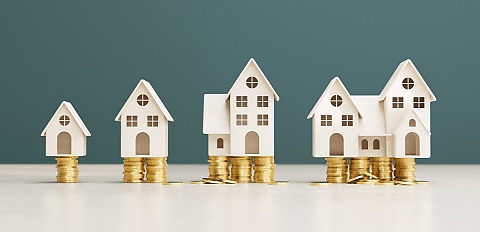The national Home Value Index (HVI) was analysed by CoreLogic, which recognised a slowdown in growth over the month of July.
The HVI rose 0.5 per cent over the four weeks to 18 July, down from a 0.7 per cent rise in the same period in June.
While there are a variety of factors influencing this data, CoreLogic economist Kaytlin Ezzy has said “persistently low consumer sentiment amid stubbornly high inflation and a rise in advertised stock levels in some markets” are the most pressing trends.
“Throughout the year so far, housing values have been buoyed by low listing levels along with the expectation of rate cuts later this year. However, with the monthly CPI figures for April and May coming in higher than anticipated, the expected timing for the first-rate cut has been pushed back by some economists, and consumers are becoming resigned to the fact that interest rates could remain higher for longer,” said Ezzy.
“With many household budgets already stretched by the high cost of living and increased debt servicing costs, it’s likely some potential buyers are holding off and delaying purchasing decisions until the outlook for interest rates becomes clearer, which has reduced demand and taken some heat out of the market.”
While many expect the RBA to keep interest rates on hold until next year, others are not so optimistic.
As discussed previously by Mortgage Business, a further 25-bp rise in August (taking the cash rate to 4.6 per cent) would take monthly repayments on the current median dwelling value to over $4,000 per month.
“Not only is this further out of reach for prospective buyers, it would likely also represent a further blowout in the premium of holding a mortgage relative to renting,” said CoreLogic’s head of research Eliza Owen.
“The bigger that premium becomes, the weaker demand for purchases may become relative to renting, despite rent growth still sitting well above average.”
Compounding value cooldowns is the flow of new listings, which has reportedly held between 5 per cent and 10 per cent higher than the previous five-year average. This has caused stock to accumulate.
CoreLogic said that this is further reducing buyer urgency and giving them more leverage when purchasing.
“Over the four weeks to 14th July, approximately 137,000 properties were advertised for sale nationally, around -17 per cent fewer listings than typically seen this time of year. While still below the previous five-year average, there has been a steady rise from the listing levels seen in March, when advertised supply was approximately -23 per cent below average,” said Ezzy.
Breaking down the four weeks to 18 July across each state, most areas saw a rise in house value. Perth witnessed the largest increase of 1.8 per cent, followed by Adelaide (1.7 per cent), Brisbane (1 per cent), and Sydney (0.3 per cent).
Others however saw a decrease, including Melbourne (-0.2 per cent) and Hobart (-0.5 per cent). Meanwhile, units saw an increase of 0.7 per cent nationally and houses climbed 0.4 per cent.
Areas are expected to see a drop in affordability, said Ezzy, with a further easing in demand due to high borrowing costs.
“Although rates remaining higher for longer could erode housing demand, its likely values will broadly continue to rise, albeit at a slower pace and with significant diversity from city to city and region to region,” she said.
[Related: How would another rate rise impact the housing market?]

